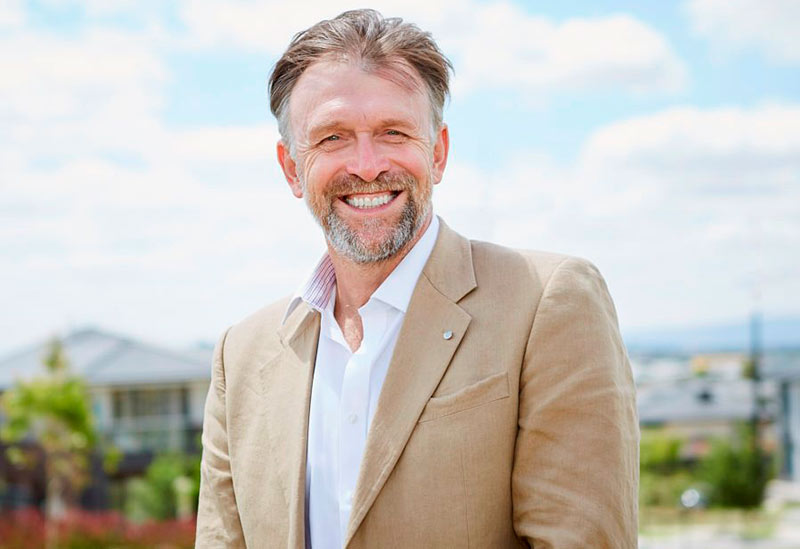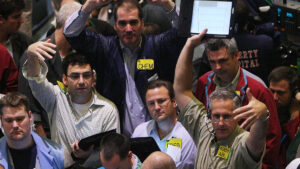DC Power Co: Harnessing the collective power of home storage to create the ‘Big Aussie Battery’

Pic: metamorworks / iStock / Getty Images Plus via Getty Images
Australia’s two million solar-powered homes collectively boast three times the energy capacity of our largest coal-fired power plant – and private innovator DC Power Co has a plan to unlock it.
East coast energy retailer DC Power Co launched just over a year ago through the world’s largest equity crowd-sourced funding campaign.
It raised $2.5 million from 12,500 individual investors, probably more than most ASX-listed companies.
Within a year of going to the market DC Power Co has several thousand solar-powered customers.
Company co-founder Nic Frances Gilley says the company has just done its first net promoter score, which gauges customer satisfaction.
“The net promoter score in this country for most retailers is negative – i.e. ‘I wouldn’t refer you to anyone’,” he told Stockhead.
“We have only had customers for six months and have just done our first one – it was 46. We believe that is the country’s highest-ever.”

Gilley says it was time for a business model that treated Australian homes as the big power generators.
“20 per cent of Australian households now have solar,” he says. “We know that by 2030 that will increase to between 30 to 50 per cent.
So at some in the near future, half of the country will want to buy less energy, not more.”
DC Power Co charges solar powered customers a flat $10 a month for cost-price renewable power and some pretty handy services, like checking in with customers if they don’t receive a solar feed-in tariff on a particular day.
“We call or SMS — ‘do you realise your system may have switched off because it didn’t feed in yesterday?’” says Gilley.
“Our business model is like a monthly fee. We get you wholesale pricing, warn you if your system isn’t working, and support you with insights to get more value from the system.”
The company also pays a comparatively whopping feed-in tariffs. If you live in Western Australia and are currently getting an abysmal 7c/KWh, look away now.
“We have one of the highest feed-in tariffs in the country at 15c,” Gilley says.
“And if you are in Victoria with a premium feed-in tariff of 60c, most other organisations just give you the 60c. We will give you the 15c on top of that.
“The same in Queensland – if you have a 44c feed-in tariff, we will add our 15c on top of it to make it 59c.”
Now DC Power Co wants to create a virtual power plant (VPPs), or ‘the big Aussie battery’, by harnessing the collective power of home battery storage.
Virtual power plants (VPP) are networks of buildings – in this case private homes — with rooftop solar and storage that are connected and managed via a software platform.
Increasingly, Australians are getting batteries – from 25,000 installations in 2018 to a projected 800,000 by 2030, the company says.
VPPs are already a success. In South Australia, low income households are saving 20 per cent on their power bills by pooling output from free solar panels and Tesla Powerwall 2 batteries.
But DC Power Co is aiming for a bigger market share and needs new investment to make this happen.
The company is offering up to 6,140,350 shares at an issue price of $0.57 per share to raise a minimum of $1,500,000 and up to $3,500,000.
The minimum individual investment is $50, and the maximum for retail investors is $10,000. There is no limit for wholesale investors.
The current funding round closes this Wednesday evening.
- Subscribe to our daily newsletter
- Join our small cap Facebook group
- Follow us on Facebookor Twitter
So why should punters invest in DC Power Co? Two reasons, Gilley says.
“One is social – if we want this country to move towards being renewable and climate friendly, we have to recognise that 80 per cent of our retailer’s own generation assets are coal and gas,” Gilley says.
“They are telling us that these assets are going to keep producing until 2050, but by then I’ll be dead and we will have lost the Barrier Reef.
“We need to move quicker than that, so there’s a social benefit to investing.”
The other thing is that there isn’t another retailer focussed on people with solar and battery storage.
“If we were to get just 200,000 of those 2 million solar-powered households – 10 per cent of that market – our valuation would be 10 times what it is today,” Gilley says.
“We are owned by our customers and therefore trusted. It’s about building trust.”
UNLOCK INSIGHTS
Discover the untold stories of emerging ASX stocks.
Daily news and expert analysis, it's free to subscribe.
By proceeding, you confirm you understand that we handle personal information in accordance with our Privacy Policy.








